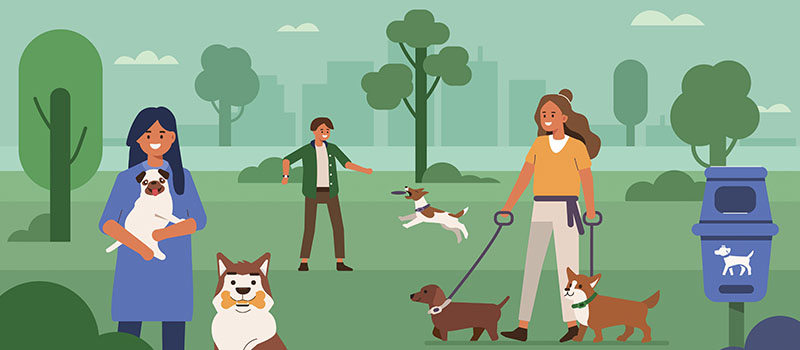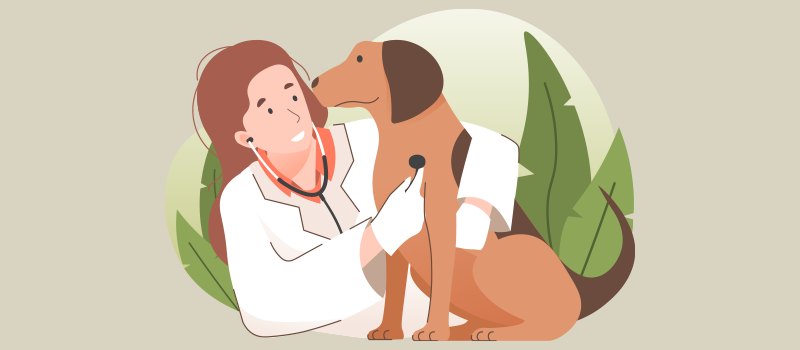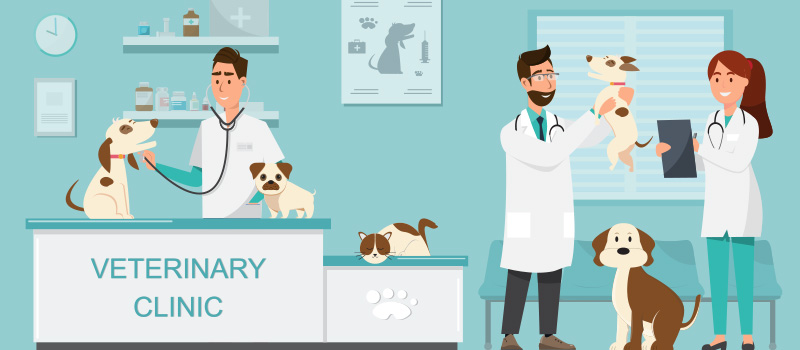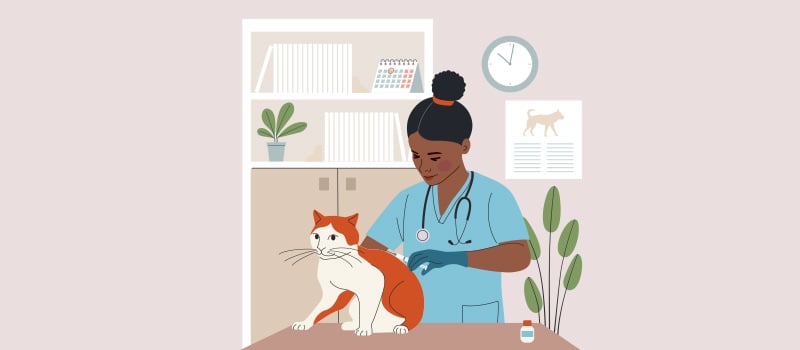What’s the Buzz
The Bee Healthy Blog
Signs of Giardia in Dogs and Treatment

Giardia is an extremely contagious parasitic infection that commonly causes traveler’s diarrhea in humans. But Giardia can also infect dogs. Please continue reading to learn more about the signs of Giardia in dogs and treatment.
What is Giardia infection?
Giardia is not a bacteria, virus, or worm. Rather, it is a single-celled parasite. There are different types of Giardia. Types A and B typically infect humans and cause traveler’s diarrhea or beaver fever. Types C and D infect dogs, and type F infects cats.
What are the symptoms in dogs infected with Giardia?
The most common symptom of Giardia in humans is diarrhea. In contrast, most dogs, especially healthy dogs, do not develop any signs or symptoms of Giardia. However, puppies, senior dogs, and adult dogs with compromised immune systems can develop a severe watery diarrhea from Giardia infection. The infection can cause serious symptoms, even death. The clinical signs and symptoms of Giardia in infected animals include:
- Sudden, severe, foul-smelling, watery diarrhea.
- Fatty stool with a greenish tinge.
- Stool with blood or mucus in it.
- Chronic intermittent diarrhea that comes and goes.
- Vomiting that can last for weeks.
- Abdominal discomfort.
- Decreased appetite.
- Gradual weight loss.
- Fever.
- Lethargy.
Can infected dogs with Giardia cysts spread it to others?
Giardia parasite exists in two states. Giardia cysts are a hardy form of the parasite that are shed in the feces of an infected animal. They can survive in the environment for several months, particularly in watery or damp environments. Many dogs become infected with Giardia when the sniff or swallow these cysts from the infected feces of other dogs.
Once the parasite enters the dog’s intestines, it transforms into the feeding stage called the trophozoite. This attaches to the intestinal wall and can cause damage and intestinal infection if present in sufficient numbers. After reproducing, trophozoites transform into Giardia cysts again, which are passed into the dog’s stool. The Giardia life cycle is 5-12 days long. In other words, it takes 5-12 days from ingestion of the Giardia cysts to passing them out in a dog’s feces.
Other pets can swallow the infected dog poop or drink contaminated water. This allows the infectious cysts to enter their intestines. In this way, the gastrointestinal parasites spread through a dog’s poop to other animals and household pets.
What increases a dog’s risk of Giardia?
The chances of a Giardia infection are higher if a dog is exposed to a large number of infectious cysts in the environment. Therefore, Giardia in dogs is common in animal shelters, pet stores, and kennels where many dogs and other animals live. With that said, a dog can pick up a Giardia cyst from dog parks or even your own backyard by swallowing cysts present in contaminated soil or drinking contaminated water.
How do vets diagnose Giardia in dogs?
Your vet can make a diagnosis of Giardia based on an infected cat or dog’s symptoms. They may also order diagnostic tests such as an analysis of your dog’s stool for Giardia-specific antigens (proteins) or an enzyme-linked immunosorbent assay. These tests allow your vet to make a confirmed diagnosis of Giardia duodenalis or other Giardia species.
How do vets treat Giardia in dogs?
The most common drugs used to treat dogs Giardia are metronidazole, fenbendazole, or albendazole. Sometimes, vets prescribe a combination of these medications as well as supportive measures in dogs with severe diarrhea or dehydration.
How long does it take for Giardia to go away in dogs?
The treatment for Giardia in dogs usually takes 3-10 days. It may take longer, depending on the severity of the infection. Some dogs may need a round of treatment for the infection to clear completely. All infected dogs undergo a fecal test again, several weeks after completion of treatment, to ensure the elimination of the infection.
What can I give my dog to get rid of Giardia?
Home remedies that might help clear a Giardia infection in dogs include Oregon grape tincture and goldenseal. Always check with the vet before trying herbal remedies in dogs infected with Giardia.
Can dogs give Giardia to humans?
The risk of your dog passing Giardia to you is low because humans and dogs get different types of Giardia infections. Nonetheless, you should take precautions such as:
- Wash your hands after picking up dog feces.
- Dispose of feces immediately.
- Regularly clean your dog’s food bowls, drinking water bowls, bedding, and toys as well as your cat’s litter box.
- Disinfect household surfaces.
- Keep your surrounding environment clean (Giardia survives well in damp conditions).
- Wear gloves while gardening to avoid contact with fecal material.
In particular, people with weak immune systems (for example, from AIDS or cancer) should be extremely careful when handling feces or contaminated material.
How to prevent Giardia in dogs?
Environmental disinfection with chlorine bleach, Lysol, and quaternary ammonium compounds like Parvosol can be useful in preventing Giardia. This will remove Giardia cysts from the environment and stop the spread of the parasitic infection. Environmental management should also include keeping everything as dry as possible. After thoroughly disinfecting your pet's bedding, toys, etc., allow them to dry out completely before reintroducing them to your dog.
References:











SOCIAL